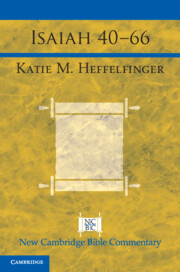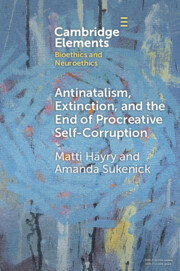213 results
1 - A Female Dog
-
- Book:
- Bitch
- Print publication:
- 27 June 2024, pp 7-34
-
- Chapter
- Export citation
Chapter 10 - Purpose
- from Part III - Motivation
-
- Book:
- Transition Expertise and Identity
- Published online:
- 30 May 2024
- Print publication:
- 06 June 2024, pp 221-228
-
- Chapter
- Export citation
6 - Emoji in General Education
-
- Book:
- Emoji in Higher Education
- Published online:
- 30 May 2024
- Print publication:
- 06 June 2024, pp 137-158
-
- Chapter
- Export citation
5 - The Requirements That Bind Us
-
- Book:
- Building Recovery Resilience
- Published online:
- 28 May 2024
- Print publication:
- 30 May 2024, pp 129-159
-
- Chapter
- Export citation
6 - Your Recovery Resilience Practice
-
- Book:
- Building Recovery Resilience
- Published online:
- 28 May 2024
- Print publication:
- 30 May 2024, pp 160-186
-
- Chapter
- Export citation
Complete Artworks without Authors
-
- Journal:
- Canadian Journal of Philosophy , FirstView
- Published online by Cambridge University Press:
- 14 May 2024, pp. 1-12
-
- Article
-
- You have access
- Open access
- HTML
- Export citation

Isaiah 40–66
-
- Published online:
- 04 May 2024
- Print publication:
- 09 May 2024
1 - The Province of the Rules of Treaty Interpretation
-
- Book:
- Demystifying Treaty Interpretation
- Published online:
- 07 March 2024
- Print publication:
- 14 March 2024, pp 1-22
-
- Chapter
- Export citation
Purpose in life and cognitive health: a 28-year prospective study
-
- Journal:
- International Psychogeriatrics , First View
- Published online by Cambridge University Press:
- 08 March 2024, pp. 1-9
-
- Article
- Export citation

Antinatalism, Extinction, and the End of Procreative Self-Corruption
-
- Published online:
- 19 February 2024
- Print publication:
- 14 March 2024
-
- Element
-
- You have access
- Open access
- HTML
- Export citation
7 - Semantic Normativity, Properly So Called
-
-
- Book:
- Kripke's <i>Wittgenstein on Rules and Private Language</i> at 40
- Published online:
- 22 February 2024
- Print publication:
- 08 February 2024, pp 124-141
-
- Chapter
- Export citation
13 - The Meaning of Meaning Ascriptions
-
-
- Book:
- Kripke's <i>Wittgenstein on Rules and Private Language</i> at 40
- Published online:
- 22 February 2024
- Print publication:
- 08 February 2024, pp 238-258
-
- Chapter
- Export citation
3 - Answering Kripke’s Skeptic
-
-
- Book:
- Kripke's <i>Wittgenstein on Rules and Private Language</i> at 40
- Published online:
- 22 February 2024
- Print publication:
- 08 February 2024, pp 55-68
-
- Chapter
- Export citation
12 - “Considered in Isolation”
-
-
- Book:
- Kripke's <i>Wittgenstein on Rules and Private Language</i> at 40
- Published online:
- 22 February 2024
- Print publication:
- 08 February 2024, pp 220-237
-
- Chapter
- Export citation
6 - Kripke and Wittgenstein on Rules and Meaning
-
-
- Book:
- Kripke's <i>Wittgenstein on Rules and Private Language</i> at 40
- Published online:
- 22 February 2024
- Print publication:
- 08 February 2024, pp 107-123
-
- Chapter
- Export citation
8 - What Is the Skeptical Problem? Wittgenstein’s Response to Kripke
-
-
- Book:
- Kripke's <i>Wittgenstein on Rules and Private Language</i> at 40
- Published online:
- 22 February 2024
- Print publication:
- 08 February 2024, pp 142-162
-
- Chapter
- Export citation
Chapter 10 - Values and Eudaimonia as Guideposts for Virtues
- from Part III - Organizing Virtue Research with the STRIVE-4 Model
-
- Book:
- The Science of Virtue
- Published online:
- 11 January 2024
- Print publication:
- 01 February 2024, pp 242-265
-
- Chapter
- Export citation
“Nothing I Could Teach Him”: Good Burns and Best Readings
-
- Journal:
- Dialogue: Canadian Philosophical Review / Revue canadienne de philosophie , First View
- Published online by Cambridge University Press:
- 24 January 2024, pp. 1-11
-
- Article
-
- You have access
- Open access
- HTML
- Export citation
Chapter 4 - Author and Identity
-
-
- Book:
- The Cambridge Critical Guide to Latin Literature
- Published online:
- 04 January 2024
- Print publication:
- 18 January 2024, pp 158-207
-
- Chapter
- Export citation
24 - Some Summing Up and Concluding Observations
- from Part III - The Period after the 1970s
-
- Book:
- Monitoring the State or the Market
- Published online:
- 07 December 2023
- Print publication:
- 21 December 2023, pp 193-200
-
- Chapter
- Export citation



